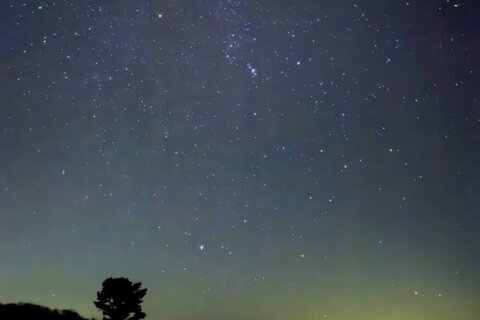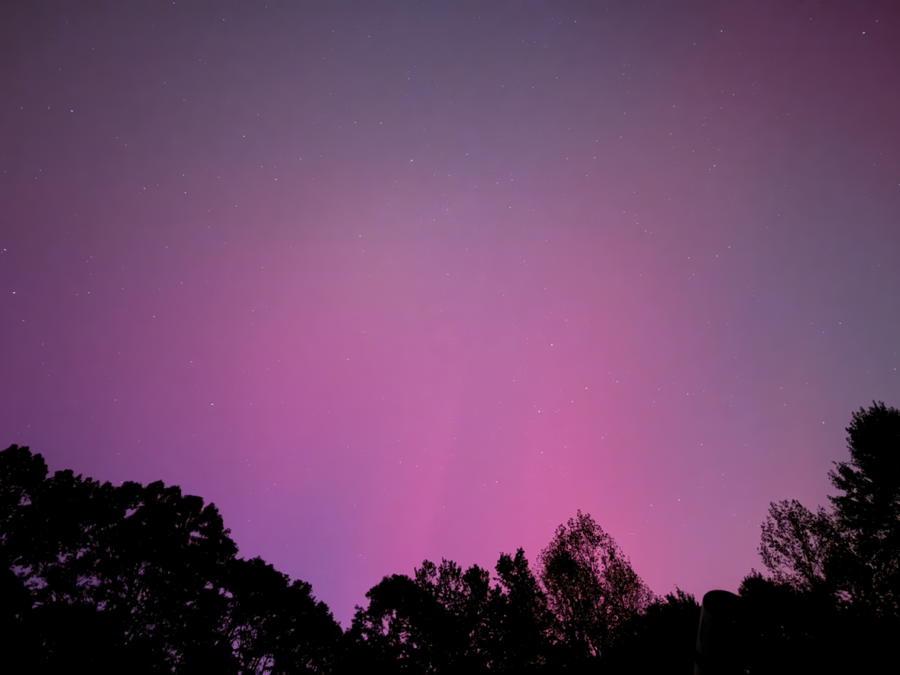
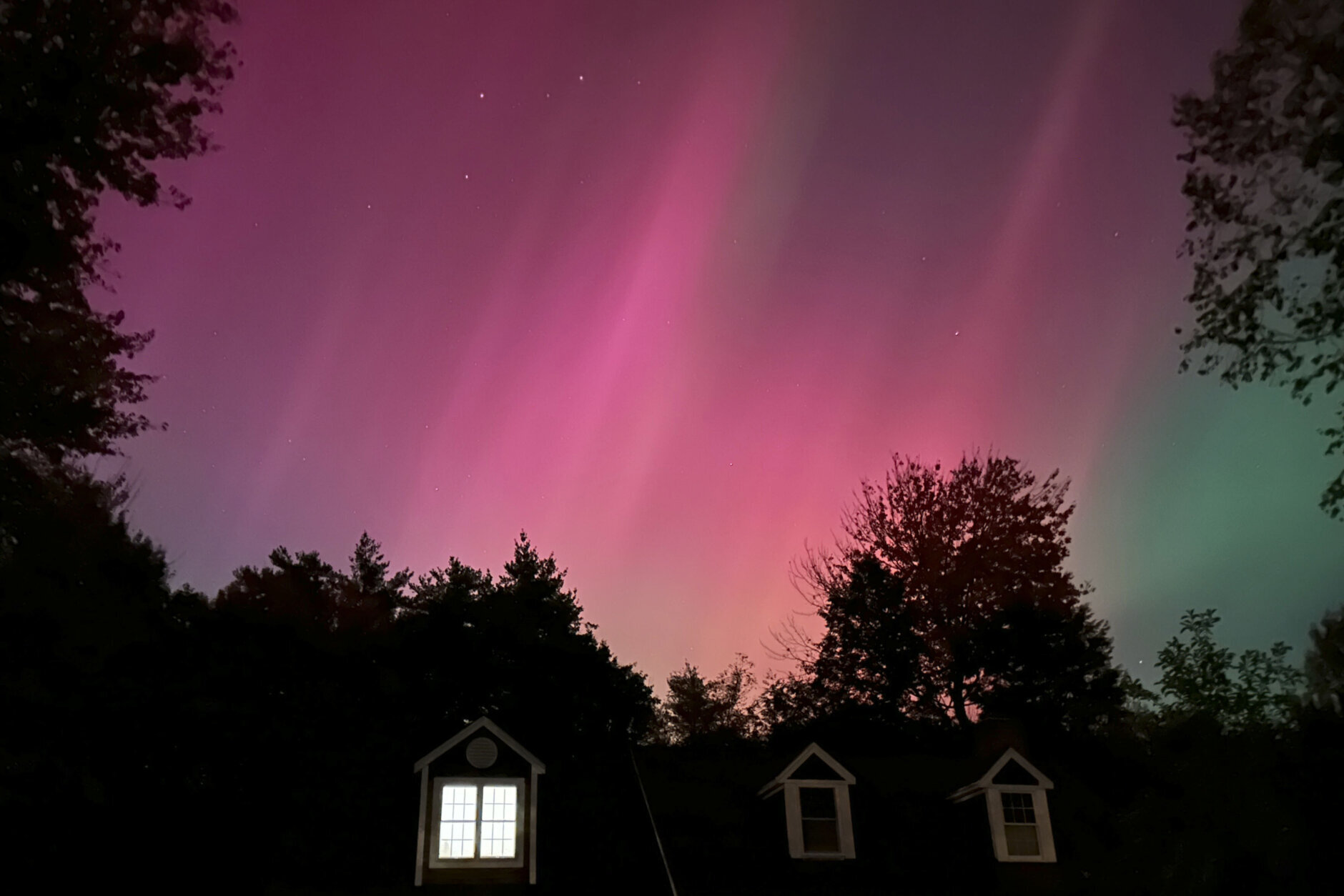
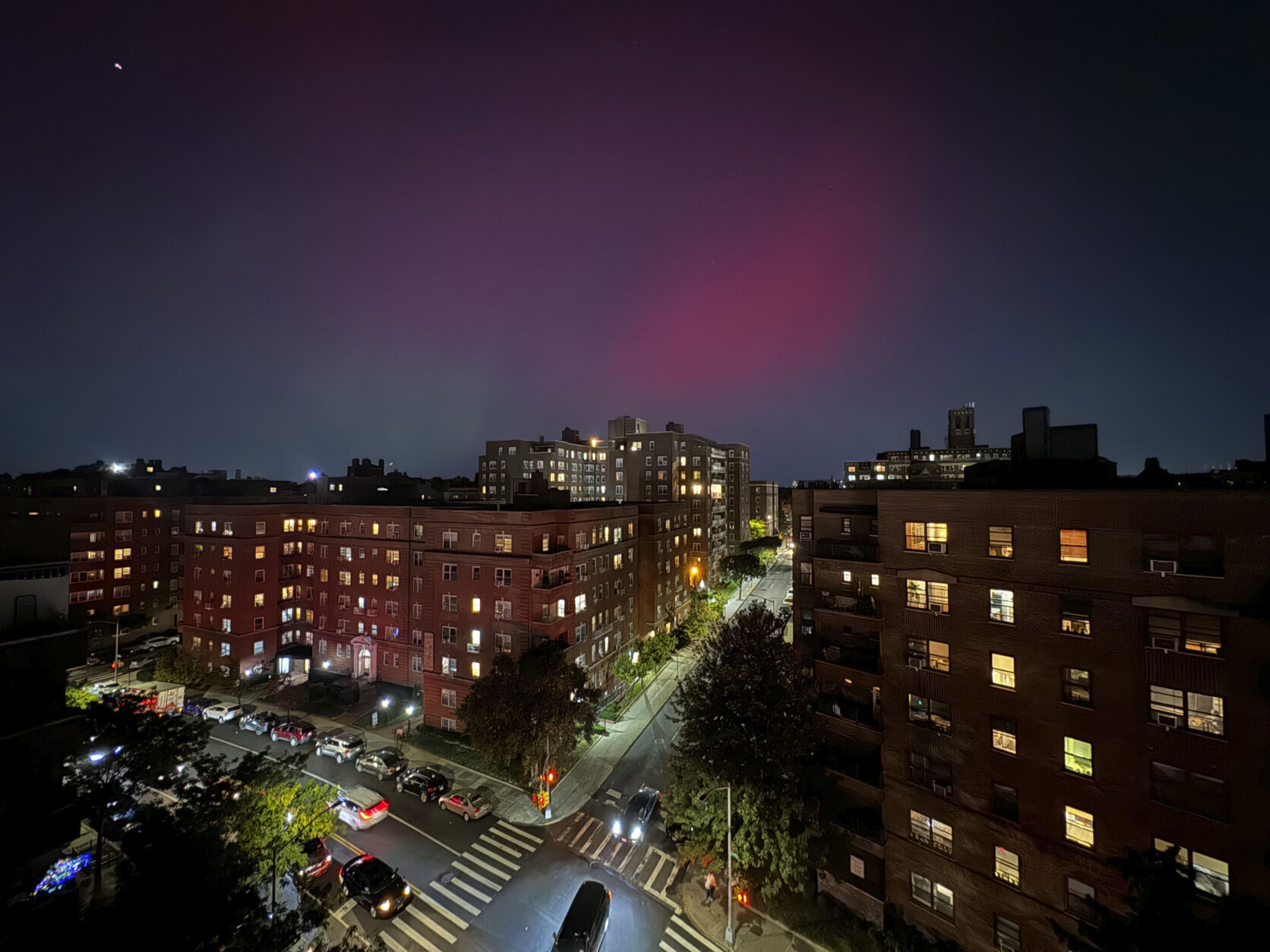
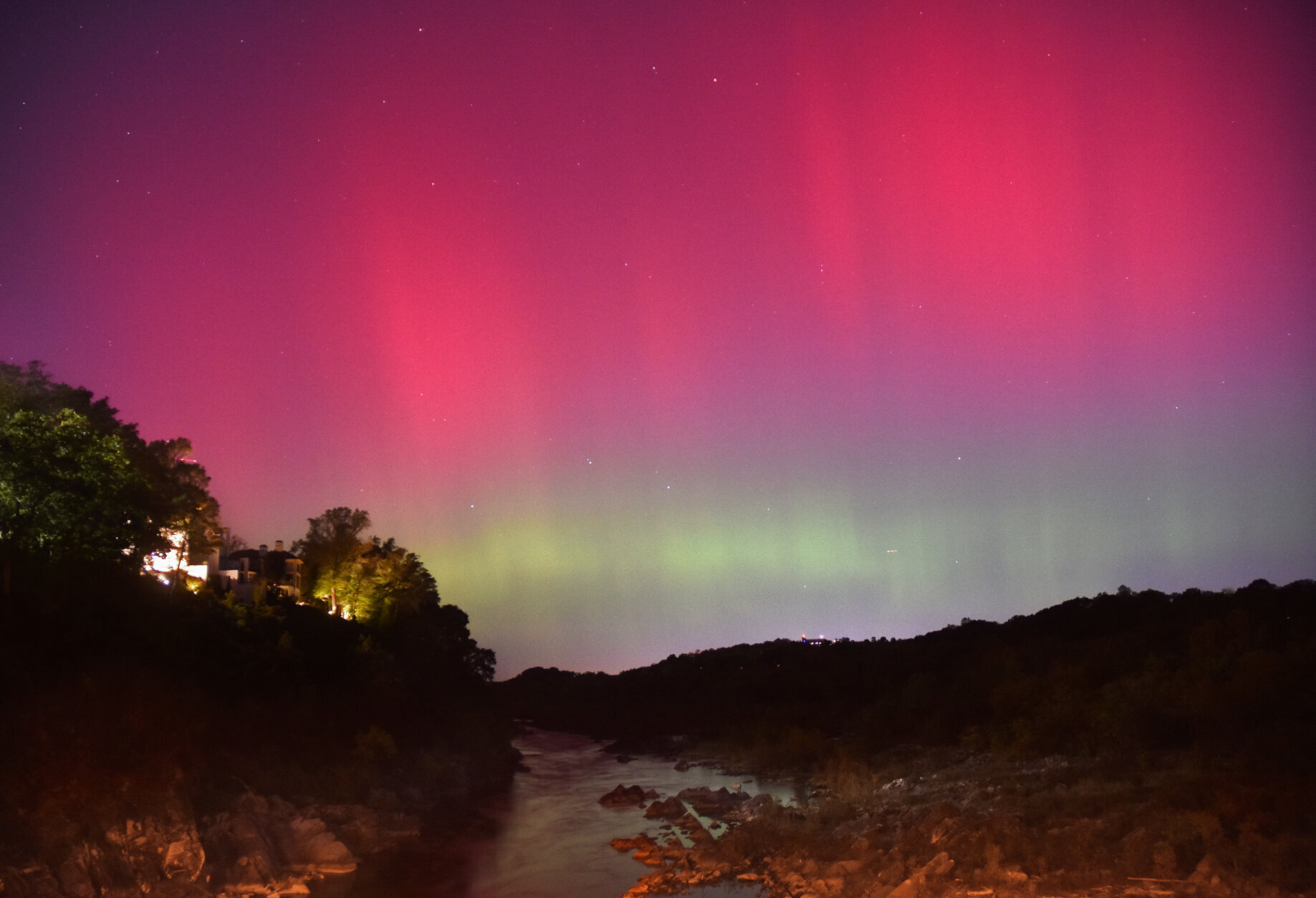
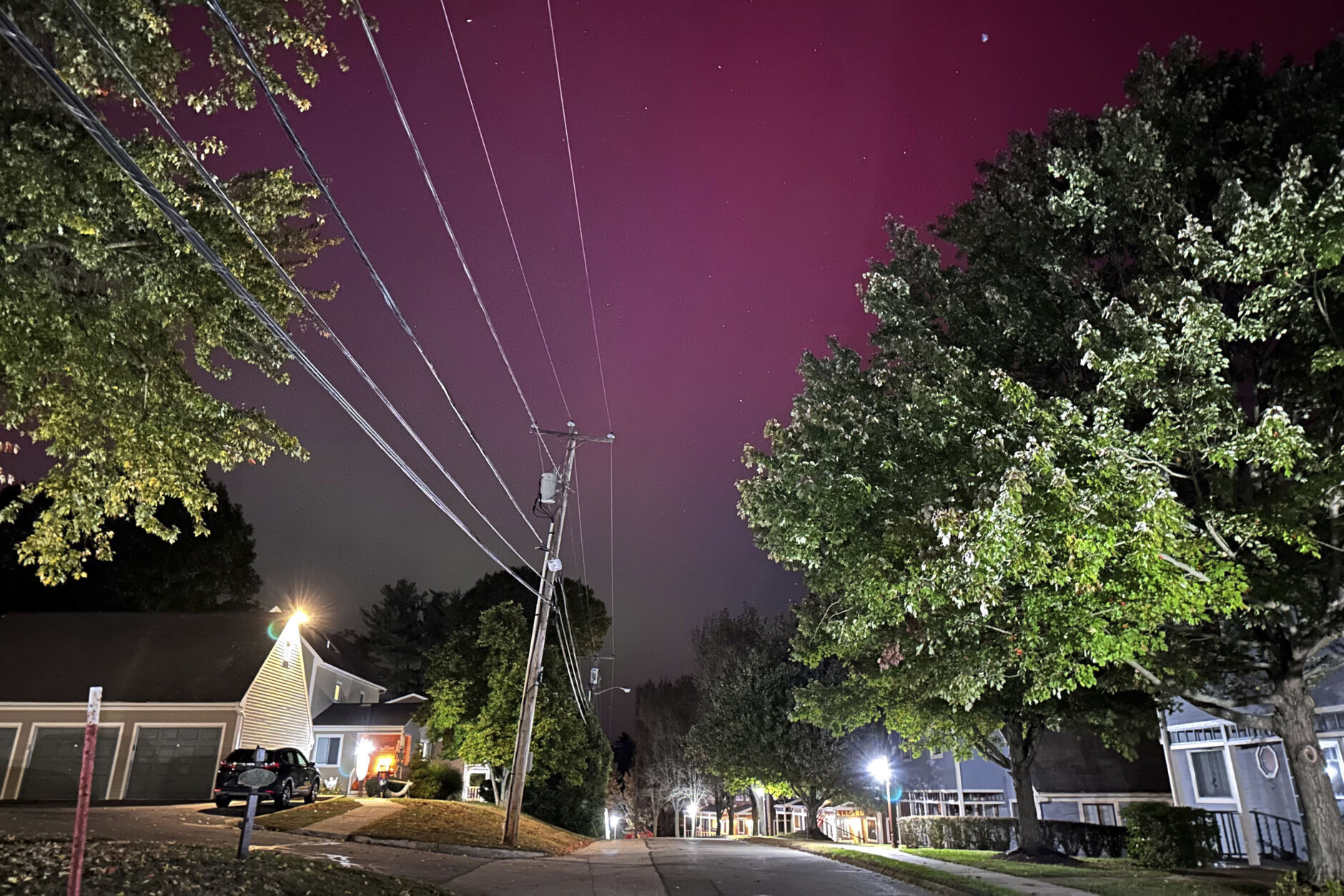
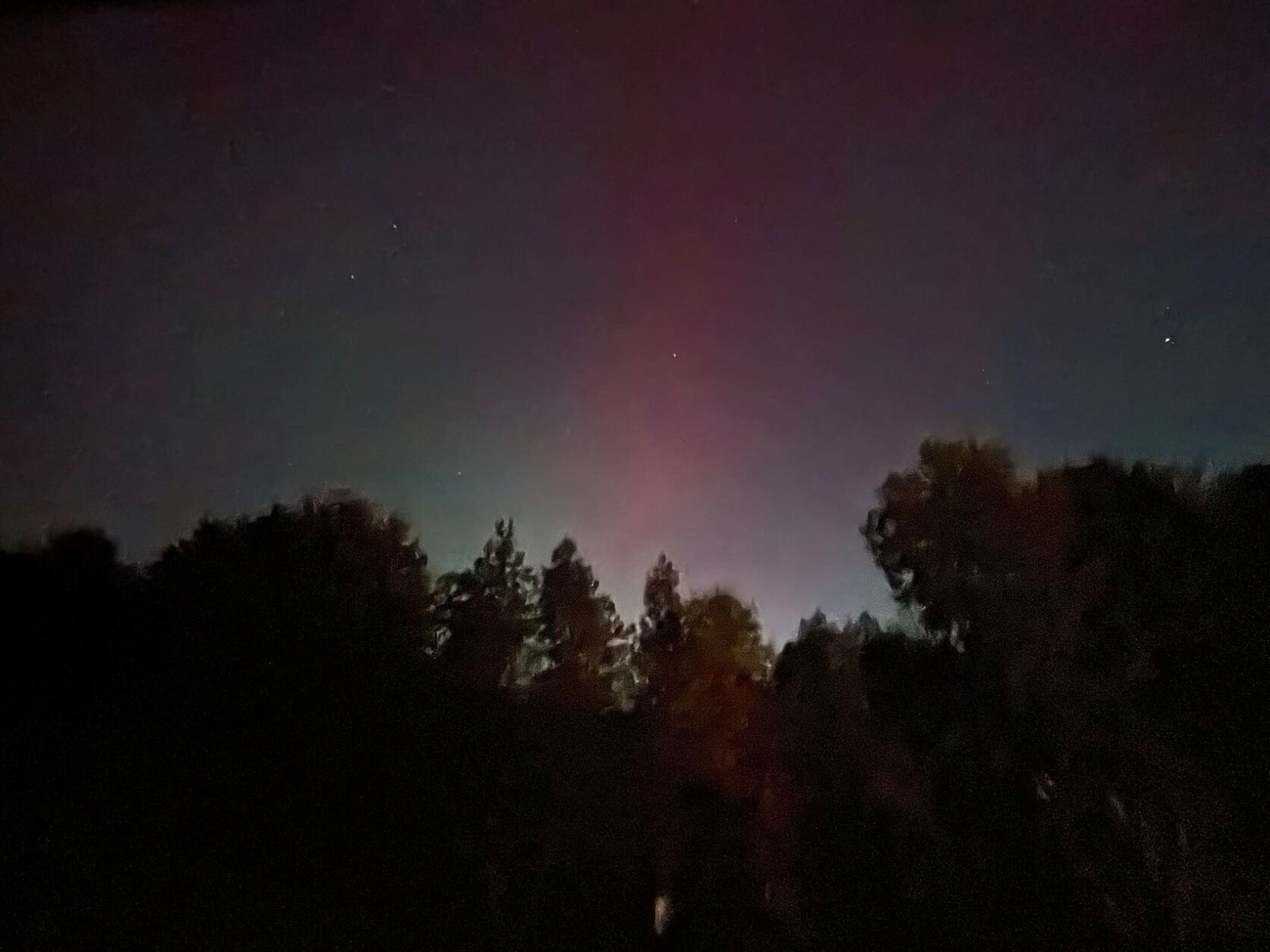
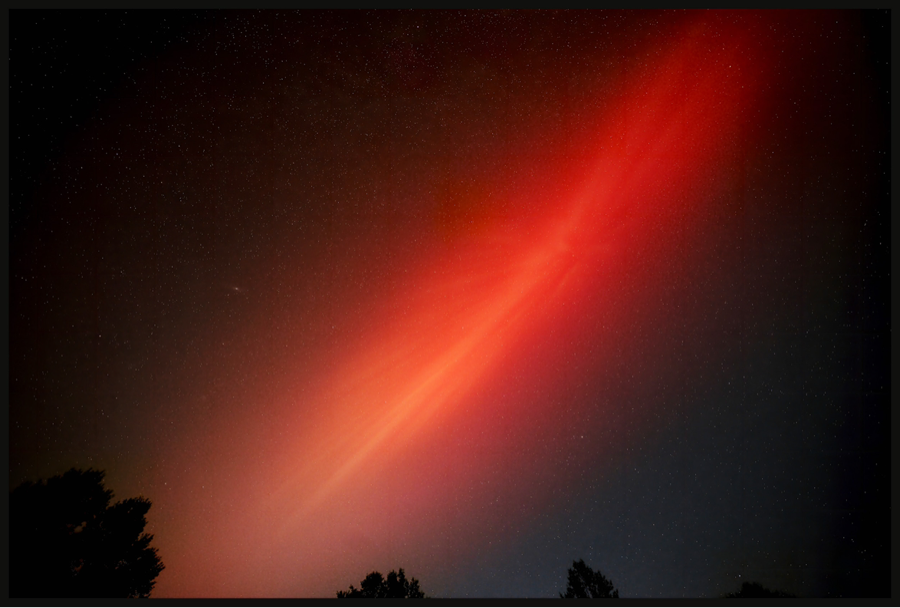
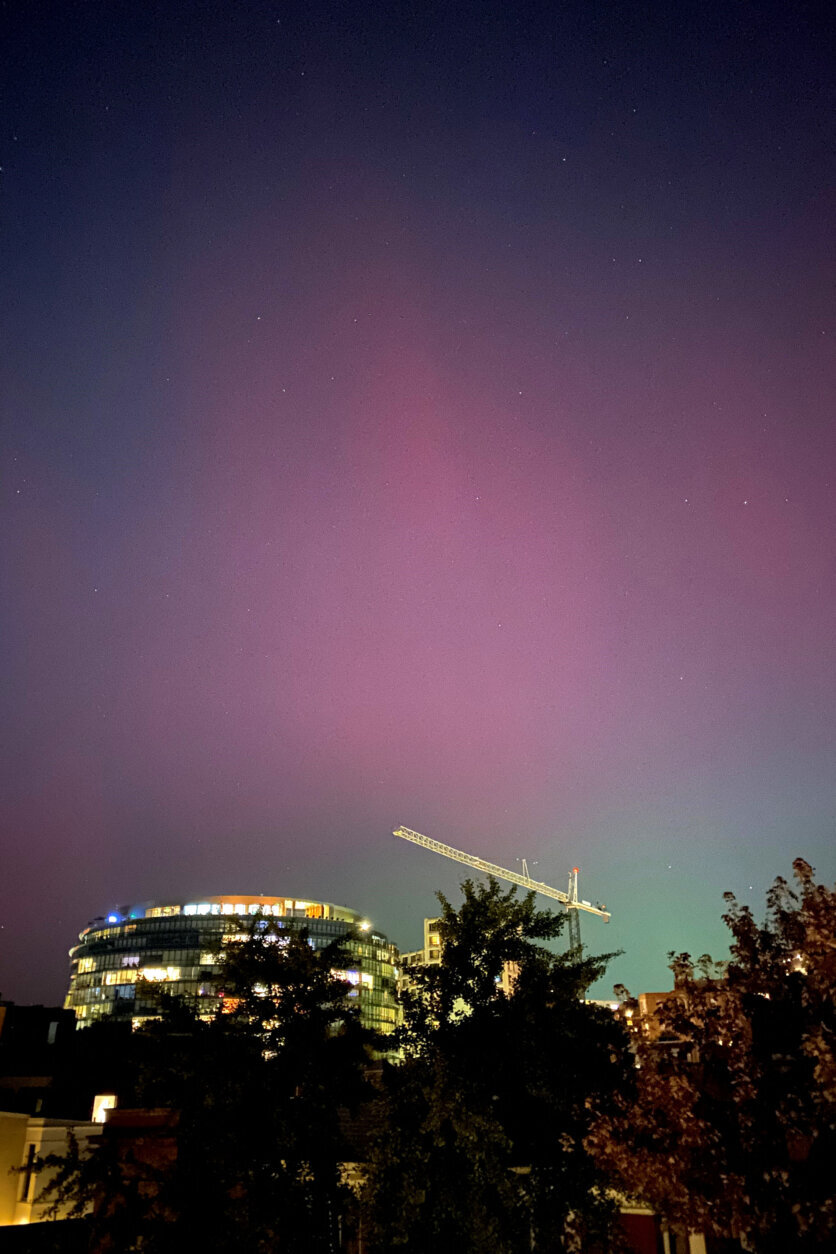
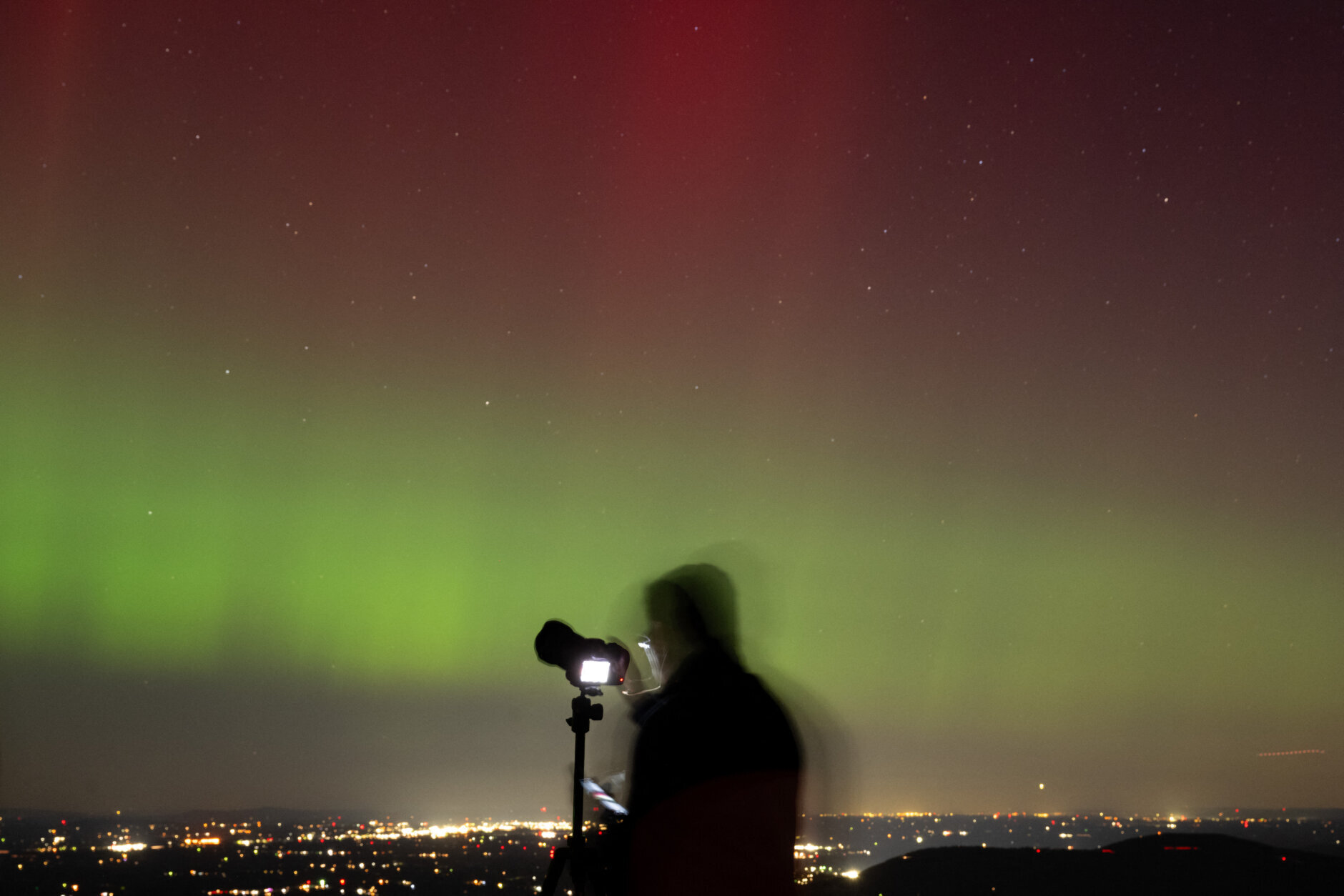
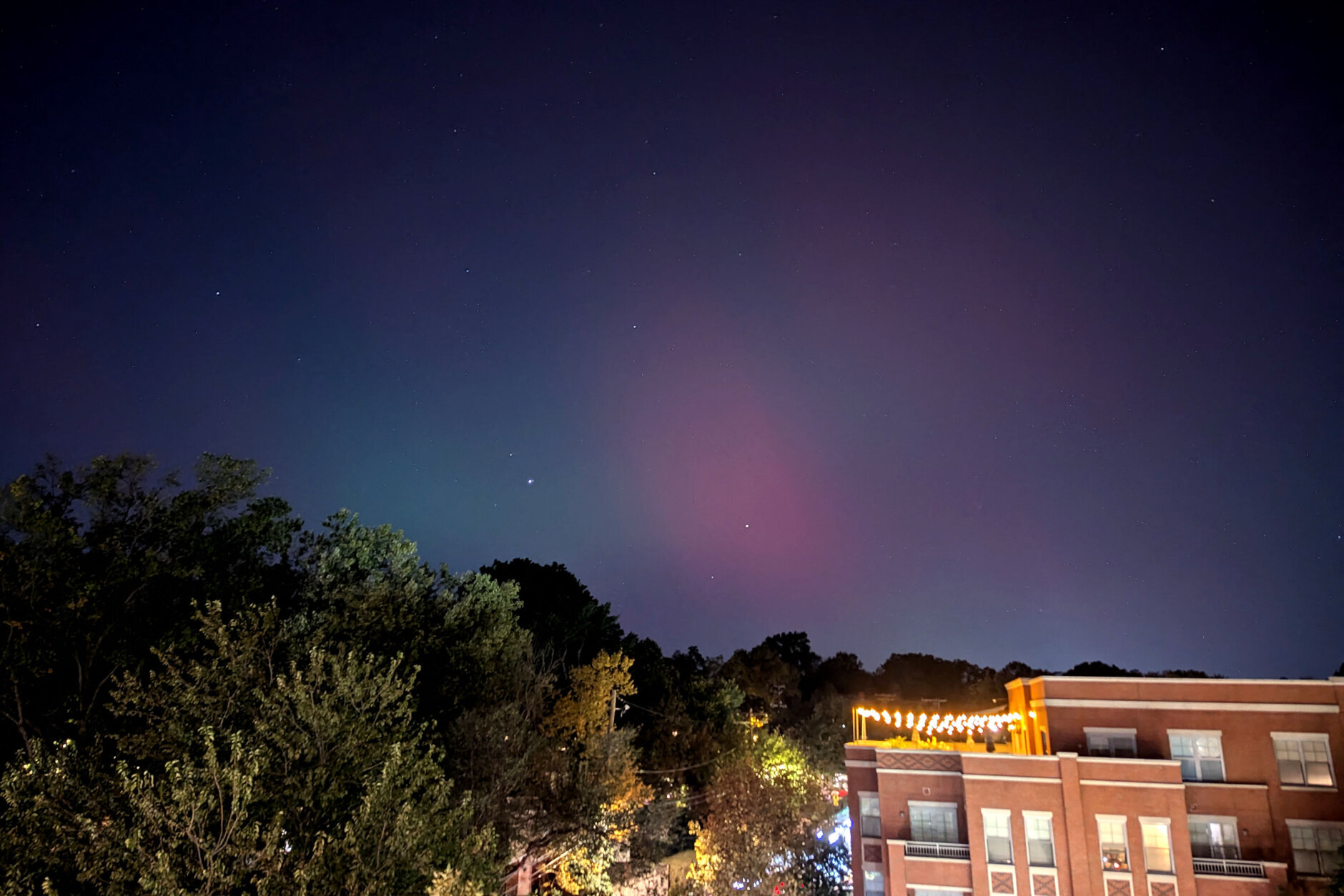
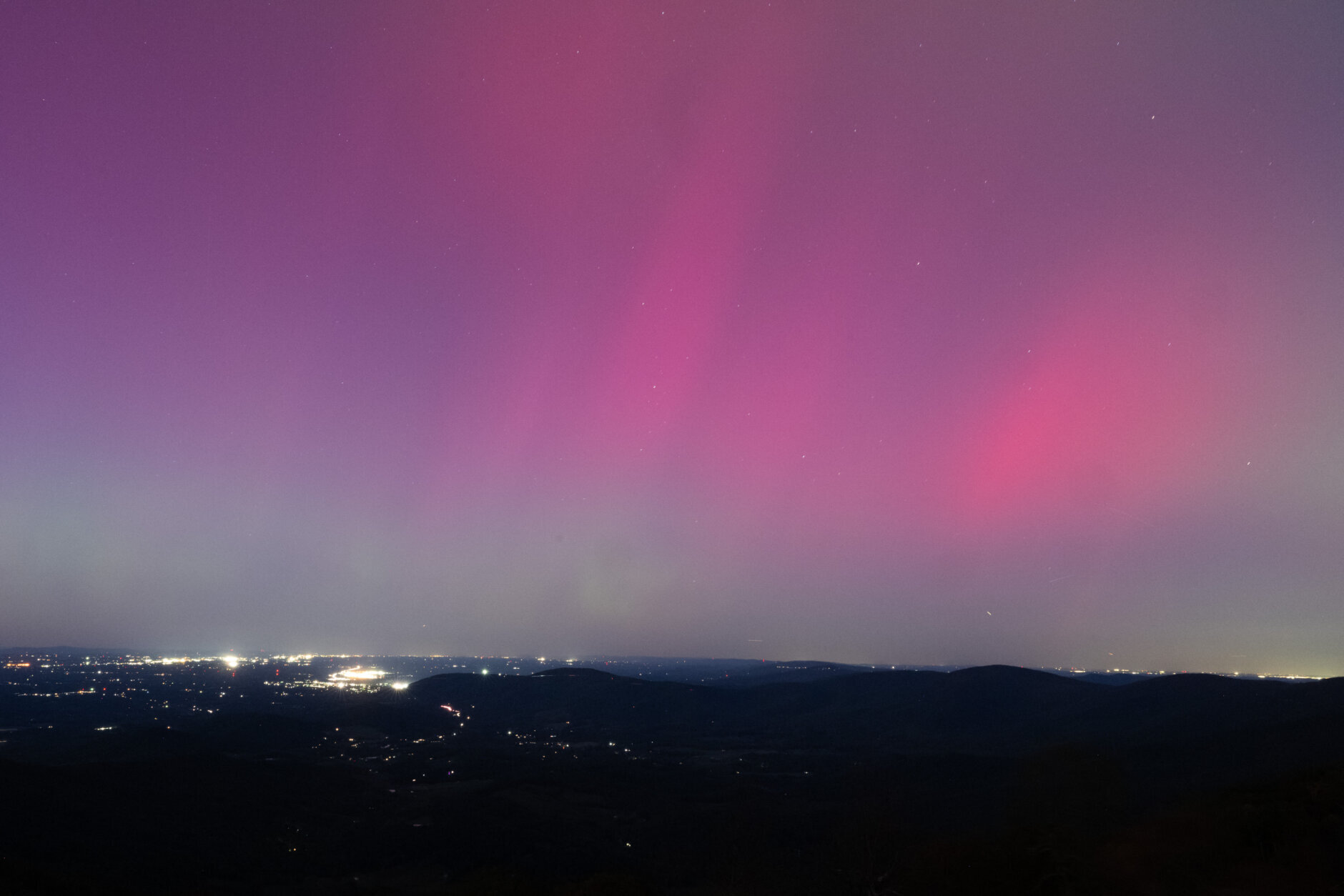
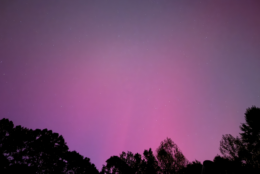
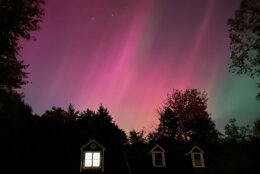
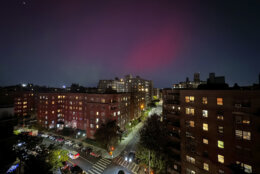
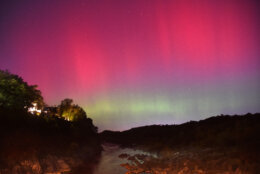
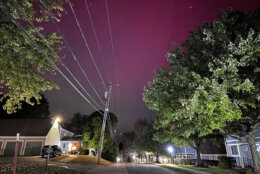
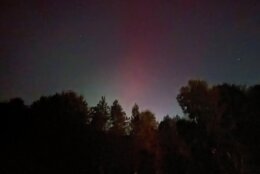
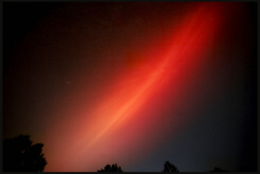
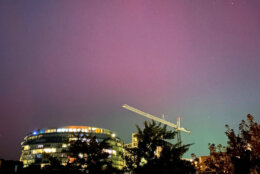
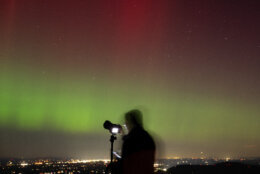
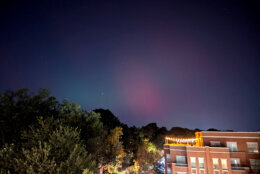
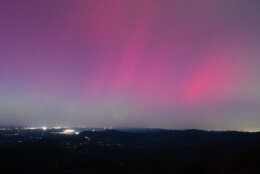
Here we go again, and so soon!
Aurora finally lit up Virginia skies earlier this week, which was a bit later than had been predicted by the National Oceanic and Atmospheric Administration Space Weather Prediction Center. Some incredible auroras shined across the D.C. region on Thursday and there may be even more to come on Friday night.
SWPC issued an alert Wednesday morning for a G4 (Severe) or greater event for Thursday and Friday. As stated in the alert:
“Potential Impacts: Area of impact primarily poleward of 45 degrees Geomagnetic Latitude.
Induced Currents — Possible widespread voltage control problems and some protective systems may mistakenly trip out key assets from the power grid. Induced pipeline currents intensify.
Spacecraft — Systems may experience surface charging; increased drag on low earth orbit satellites, and tracking and orientation problems may occur.
Navigation — Satellite navigation (GPS) degraded or inoperable for hours.
Radio — HF (high frequency) radio propagation sporadic or blacked out.
Aurora — Aurora may be seen as low as Alabama and northern California.”
This Geomagnetic Storm Watch is in effect due to a large coronal mass ejection that occurred Sunday. The coronal mass ejection was caused by a powerful solar flare that lasted for four hours!
This geomagnetic storm and associated aurora event forecast is not predicted to reach the historic levels of May 10 of this year. But, we should be watching the skies because if the forecast holds for G4 (Severe), and especially if G5 (Extreme) levels are reached, it could be quite the sight.
It will be well worth taking a look to the north from a dark sky site with a clear horizon at times when G4 levels — see forecast below — are reached. The higher the number, the better chances for aurora. This forecast can change.
The Space Weather Prediction Center’s Friday NOAA geomagnetic activity observation and forecast is below:
Oct. 11
11 p.m. (Oct. 10) to 2 a.m. — 8.00 (G4 Severe)
2 a.m. to dawn — 7.00 (G3)
Analysis of the CME associated with the X1.8 flare suggests further enhancement 10 Oct into 11 Oct, reaching G4 (Severe) levels is likely with G5 (Extreme) levels possible.
You might be able to visually detect some color in the sky if aurora are present, but they will likely be low on the northern horizon. Wide field binoculars can enhance your view if aurora are present.
Use a camera or smartphone that can take exposures of several seconds — including using “Night Sky” or “Low Light” settings if your camera has them — of the northern horizon. Steady the camera or use a tripod for best image results. The camera may capture aurora your eyes did not.
Our best bet is to monitor WTOP’s weather page for sky conditions, the NOAA, space-related social media sites, EarthSky.org and space.com for updates.
Spaceweather.com — I check this site every day just as I do my local weather — has a daily snapshot of what the space weather in the solar system is going to be like and a current image of the sun.
With our terrestrial weather being such a factor in our daily lives here in the D.C. area, and frankly, the rest of the world, we are also directly affected by space weather, which can produce a variety of events, including Wednesday’s geomagnetic storm and aurora.
Space Weather, like our terrestrial weather, is caused by Earth’s interaction with our star, the sun. We know it will be there every new day and count on it for life-giving warmth and energy. We also have become accustomed to it being well behaved. What many people may not know is that our sun undergoes an 11-year solar cycle that can affect space weather throughout our solar system.
Our sun is a 4.5-billion-year-old star that we have been monitoring since Galileo.
The sun had an episode of disturbed behavior in 1859 that, if it were to occur today, could adversely affect us if we were not prepared.
In 1859 on Sept. 1, the sun experienced a solar storm episode that was observed by solar astronomer Richard Carrington that ended up bearing his name — “the Carrington Event.” This was a watershed event in solar astronomy and also the sun’s effect on the Earth, as nothing like it has been seen since.
If a Carrington-level solar event were to happen today, the affect on modern society’s infrastructure could be potentially catastrophic, especially the electrical grid, which powers everything else. If you think this is unlikely, or too sci-fi to be true, I suggest you read the report by the National Academies of Science published in 2008.
Last year, the sun had a very powerful space weather event on March 12, which, fortunately for us, occurred on the far side of the sun.
Follow Greg Redfern on Facebook, X and his daily blog to keep up with the latest news in astronomy and space exploration.
Get breaking news and daily headlines delivered to your email inbox by signing up here.
© 2024 WTOP. All Rights Reserved. This website is not intended for users located within the European Economic Area.

